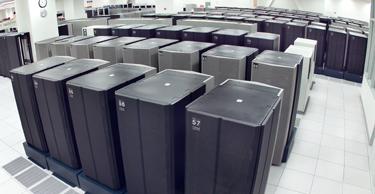Theoretical Nuclear Physics
Overview
The main emphasis of the Theoretical Nuclear Physics group's work at the GW Institute for Nuclear Studies centers around N* physics, driven by the aim of providing a fundamental understanding of the structure of N*s and the dynamics involved in nucleon resonance excitation at relativistic energies. The group also provides theoretical support and guidance to the experimental efforts of GW at JLab and other facilities. We address the issues in a two-pronged approach.
At the hadronic level, the focus is on the interaction and electromagnetic production of the lowest pseudoscalar meson octet (pion, eta, kaon) with the nucleon. Emphasis is placed on a consistent description of hadronic and electromagnetic reactions in a framework that can properly incorporate unitarity, Lorentz covariance and gauge invariance. The goal is to provide a theoretical framework for extracting N* resonance properties as unambiguously as possible. In addition, the group is interested in electromagnetic and weak processes on nuclei and hypernuclei.
At the quark level, the focus is on understanding hadron structure from QCD (Quantum Chromodynamics, the fundamental theory of the strong interaction). The tools employed are lattice QCD and QCD sum rules. The goal is to provide first-principles calculations for aspects of hadron structure that are of current interest to nuclear physics community, especially those related to the physics program at JLab, using state-of-the-art technology in the field.
Faculty
- Andrei Afanasev
- Andrei Alexandru
- Michael Doering
- Harald Griesshammer
- Helmut Haberzettl
- Frank X. Lee
- Ronald Workman
Resources
We have access to a variety of computing resources, including:
- The 6080-processor Seaborg IBM-SP supercomputer at NERSC (National Energy Research Supercomputing Center), located at Lawrence Livermore National Laboratory, and sponsored by U.S. Department of Energy. This computer is ranked 14th on the world's TOP500 supercomputer list as of June 2004.
- The 3016-processor Lemieux supercomputer at the Pittsburg Supercomputing Center, sponsored by U.S. National Science Foundation. This computer is ranked 25th on the TOP500 list as of June 2004.
- The 1152-processor BlueHorizon at NPACI (National Partnership for Advanced Computing Initiative), located at the San Diego Supercomputing Center, and sponsored by U.S. National Science Foundation.
- The 256-processor Intel Clucter at Jefferson Lab.



